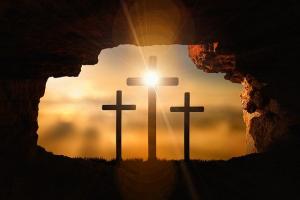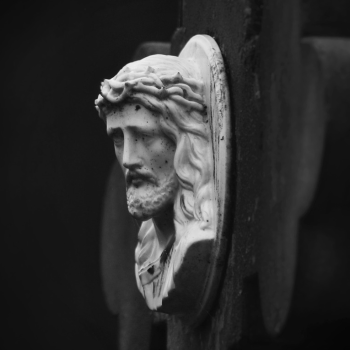
Everyone has beliefs. The atheist or skeptic might prefer to call them presuppositions or axioms, but whatever term one wishes to use, beliefs provide the foundation of every philosophy or worldview. Catholicism is no different. Indeed, if one accepts that belief is synonymous(or at least, analogous) with faith, then belief is the sine qua non of Catholicism.
In the following article, I will examine what Catholics believe and what some of the misconceptions about Catholicism are. Before commencing, however, it is beneficial to set the foundation for the topic by asking what belief is.
What Is Belief?
A quick note about language: I will use belief and faith synonymously in this section.
In an age driven by emotion, a belief often is defined as what one “feels” is true or false. That is not what Catholicism means by belief. From the perspective of Catholic theology, belief is an assent or dissent to a proposition. Belief means having a good reason to think something is true or false.
Religious belief (or faith) begins with reason. That is to say that one believes something is true based on what one already knows and what evidence one finds. Belief is an inference based on reason. Belief is NOT accepting something one knows is false (which is epistemologically impossible) or accepting something without cause.
Please note that faith begins with reason. It does not end there, however. The explanation is owing to the object of faith, which is ultimately God. Faith is suprarational because God cannot be entirely comprehended by human reason. Put differently, faith is an assent at the far side of reason.
Articles Of Faith
Any effort to articulate what Catholics believe is best begun by examining the Creeds promulgated by the Catholic Church. Creed comes from Latin and means “I believe.” To codify what Catholics believe, the Catholic Church developed three creeds. These are the Apostles Creed, the Nicene Creed, and the Athanasian Creed. These Creeds not only articulated the content of the Catholic faith but often acted, and continue to act, as defenses against heresy.
Regardless of which Creed one refers to, nine articles or statements of belief are foundational:
1) The belief in a Triune God. At the heart of the Catholic understanding of God is the Holy Trinity. The Trinity is the belief that three persons exist in the single essence that is God. In order to understand this, it is beneficial to explain the difference between essence and existence.
Essence is the very nature or whatness of a thing. The essence of God is divinity. By comparison, we may say that the essence of human beings is their human nature. The existence of a thing is how it manifests itself. God manifests Himself by the three persons of the Holy Trinity.
The three persons are distinct yet one in “substance, essence or nature” (Fourth Lateran Council as quoted in the Catechism of the Catholic Church). They are the Father, the Son (Jesus Christ), and the Holy Spirit. Thus, “Tri” means three, and “Unity” means one, Tri+Unity = Trinity. It acknowledges what the Bible reveals to us about God, that God is yet three “Persons” who have the same essence of deity.
2) The belief in the Incarnation of Jesus Christ, Who is the Son of God. Where the Father is the First Person of the Trinity, Catholics believe that Jesus is the Second Person of the one God. Catholicism asserts that God took upon Himself a human form – the Incarnation – (Philippians 2:6-8) to save mankind by reconciling us with the Father so that we might know God’s love, to be our model of holiness, and to make us “partakers of the divine nature” (2 Peter 1:4).
While God became a man in the form of Jesus, He did not lose His divine nature. Jesus is fully God and fully man; he possesses both a divine and a human nature.
3) Belief in the Person and work of the Holy Spirit. The Holy Spirit is the Third Person of the Trinity. While distinct in personhood, the Holy Spirit is consubstantial with the Father and Son. The Holy Spirit shares the same Divine nature as the Father and Son and is God.
Catholics believe that the Holy Spirit predisposes us to accept Christ, and He teaches us who Jesus is and how we can be more like him. This is significant when one understands that being Catholic means being a “little Christ.” Indeed, Catholicism asserts that the work of the Holy Spirit sanctifies us.
4) The belief that Jesus was Crucified, rose from the dead, and ascended to Heaven. Catholics believe that Jesus was Crucified in order to make atonement for the sins of all mankind. Catholics also believe that Jesus rose from the dead, thereby defeating the penalty for sin, which is death (Romans 6:23).
Catholics believe that forty days after the Resurrection, Jesus ascended into Heaven. There are two principal reasons for the Ascension. First, the Ascension means the final elevation of Christ’s human nature into the condition of divine glory. It is the concluding work of redemption. Christ’s Ascension is the archetype or model of our own Ascension into Heaven. It expresses the Catholic belief that in Christ’s human nature, the humanity we all share has entered into the inner life of God in a new way.
The second reason for the Ascension of Christ is that it is the necessary condition for Pentecost. In Jesus’s own words, “The Advocate, the Holy Spirit that the Father will send in my name -he will teach you everything and remind you of all that [I] told you.” (See John 14:26).
5) Believe that the Catholic Church is the Mystical Body of Christ. Christ established the Catholic Church as an extension and continuation of the Incarnation.
Saint Paul speaks of all Christians as members of Christ, so they form one Mystical Body with Him. “You are the Body of Christ, member for member” (1 Corinthians 12:27), and of Christ: “the Head of His Body, the Church” (Colossians 1:18).
Christ instituted the Church as the great sacrament of our salvation through Christ’s continuing action. He gave the Church its definite structure, with Peter at its head, and conferred his divine authority on it. Additionally, Jesus promised to remain with it until the end of time and send his Spirit to guide it and teach it in all truth.
6) Belief in the Communion of Saints. In a sense, the communion of saints is an extension of the mystical body of Christ. It is a mystical bond uniting Catholics on earth, in Purgatory, and Heaven.
Saint Paul writes, “Who shall separate us from the love of Christ? Shall tribulation, or distress, or persecution, or famine, or nakedness, or peril, or sword? No, in all these things, we are more than conquerors through him who loved us. For I am sure that neither death, nor life, nor angels, nor principalities, nor things present, nor things to come, nor powers, nor height, nor depth, nor anything else in all creation, will be able to separate us from the love of God in Christ Jesus our Lord.” (See Romans 8:35, 37-39).
It can be helpful to view the Catholic Church as having three states. The first state is composed of those alive on earth who are pilgrimaging toward their heavenly home. The second state is those Catholics who are being purified in Purgatory. Finally, the third state is those in God’s presence in Heaven. Understood this way, the communion of saints is nothing more than the bond among the righteous of Christ.
7) Belief that all humankind is subject to Original Sin and requires salvation. It is the assertion of the Catholic Church that human nature is stained or contaminated by original sin. David writes, “Behold, I was shapen in iniquity, and in sin did my mother conceive me.” Saint Paul echoes this view. “Therefore, just as through one person sin entered the world, and through sin, death, and thus death came to all.”
This stain of original sin has, among its effects, led human beings to be estranged or separated from God. Because sin is an act against the will of the eternal God, human beings require a savior to reconcile man and God. This savior is Jesus Christ.
8) Belief in the Second Coming of Christ. It is the belief of Catholics that Jesus will return. This is known as the Second Coming and is based on Jesus’ own words. “When the Son of Man comes in his glory, and all the angels with him, he will sit upon his glorious throne, and all the nations will be assembled before him.” (See Matthew 25:31-46).
At the Second Coming, Christ will judge all souls, and the righteous will be reunited with their glorified bodies. The universe will be renewed in a new creation, a great mystery that Scripture calls “a new heaven and a new earth.” This is the full and definitive reign of the Kingdom of God in the heavenly Jerusalem, where God will make his dwelling among human beings.
9) Belief In The Real Presence.
The belief in the Real Presence refers to the Catholic assertion that Christ is “in the sacrament of the most Holy Eucharist [and] is contained truly, really, and substantially the body and blood, together with the soul and divinity, of our Lord Jesus Christ.” (Council of Trent).
In order to understand the Eucharist, it is necessary to explain transubstantiation. Transubstantiation is the changing of a thing’s substance.
In the context of the Eucharist, transubstantiation is the changing of the form of the bread into the body of Jesus and the form of wine into the blood of Jesus. This process is done without changing the matter of either the bread or the wine. That is to say that during the Eucharistic Prayer, the bread and the wine become the body and blood of Jesus while still retaining the appearance of bread and wine.
While this is a complex subject, the Catholic Church takes Jesus at His word when He says, “This is my body that is for you. Do this in remembrance of me. In the same way also, the cup, after supper, saying, This cup is the new covenant in my blood. Do this, as often as you drink it, in remembrance of me” (1 Corinthians 11:24-25).
Misconceptions
Having endeavored to articulate the foundational beliefs of Catholicism, I want to address two misconceptions about what Catholics believe.
The first and perhaps most common misconception is that Catholics worship Mary. The cause of this error is caused by failing to understand the difference between worship and prayer and how Catholic theology distinguishes the two.
Worship or Latria (in Latin) is an act of adoration due to God (Holy Trinity) alone (This is what Catholics do during the Holy Mass). Hyperdulia is a special veneration due to the Blessed Virgin Mary. Finally, there is Dulia, which is the honor given to the angels and saints as friends of God.
The second misconception I shall address is the role of the Pope. In order to understand the role of the Pope, it is necessary to understand apostolic succession. Succinctly, apostolic succession is the unbroken lineage of Bishops stretching back to Saint Peter. Jesus founded His Church and made Peter the first Pope (Matthew 16:18). The Pope is the head of the visible or earthly Church that Jesus founded.
Conclusion
In the preceding work, I have endeavored to provide an introduction to the articles of faith of the Catholic Church. I have identified and explained nine articles that I think are foundational to understanding what Catholics believe. Finally, I have addressed two common misconceptions about the Catholic faith.












